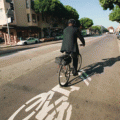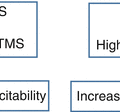In addition to conducting a complete history and physical examination of the elderly patient, the following assessments are recommended:
• Assess the elderly patient’s cognitive ability
• Screen the elderly patient’s depression
• Identify the elderly patient’s risk factors for developing postoperative delirium
• Screen for alcohol or drug abuse/dependence
• Perform a preoperative cardiac evaluation according to the American College of Cardiology/American Heart Association algorithm for patients undergoing noncardiac surgery
• Prevent the elderly patients from postoperative pulmonary complications
• Document the patient’s functional status
• Document the patient’s history of falls
• Determine baseline frailty score
• Assess the elderly patient’s nutritional status
• Take an accurate and detailed medication history and monitor for polypharmacy
• Determine the elderly patient’s treatment goals and family’s expectations
The PRM team must take into account that elderly patients often underreport disability because of lack of self-awareness and cognitive impairment or simply minimize their functional limitations [3, 8]. Usually, the elderly patients and their families have their own expectations, and these should be reconciled with the PRM team’s assessment. Once the preoperative PRM assessment is completed, it is important to educate patients and families regarding options for PRM and to set expectations in accordance with enhanced recovery programs (ERP), and preoperative PRM interventions produce less anxiety, pain improvement, and patient’s satisfaction in educated elderly [5, 21]. In general, preoperative PRM interventions aim to improve physical function of elderly patients prior to surgery, as well to reduce PC, length of hospital stay, and negative effects of the surgical stress syndrome. Preoperative PRM programs for elderly surgery patients have been shown to be beneficial and safe, and they may include aerobic exercise training, e.g., thoracic expansion exercises, taught shoulder exercises, as well as marching on the spot for varying amounts of time, once a day. Aerobic exercise training is associated with improved physical fitness of elderly patients before and improved functional recovery after abdominal and thoracic surgery [22]. Evidence demonstrates that respiratory muscle training decreases the incidence of PC after abdominal and thoracic surgery [23]. The use of different forms of exercise training including endurance and interval has been shown to improve musculoskeletal and cardiovascular function in the elderly patients [24].
Instructions for deep breathing, splinted coughing exercises, and shoulder exercises, as well as exercises for prevention of deep vein thrombosis, are included in the information booklet and DVD shared among elderly patients preoperatively. It’s proven that patients who are educated prior to surgery have less anxiety, improved pain, and patient satisfaction [11, 21, 25].
Elderly patients are encouraged to record data concerning their physical function, ADL, and QoL in the diary section of the information booklet, which sets out what they achieved each day of their hospital stay [5, 6].
47.3 Postoperative PRM Management of Elderly Patients
Postoperative PRM interventions have been shown to be beneficial among elderly individuals following surgery procedures. In many studies, it was demonstrated that exercise training significantly increases strength and functional and motor performance among elderly patients and may also improve the balance and psychological factors [26]. In this phase it is beneficial for the PRM team to counsel patients and their families on the expected outcomes and various postoperative alternatives. The prescription of an appropriate postoperative PRM program tailored to the elderly’s specific needs is a part of a multidisciplinary postoperative PRM approach [6]. Several high-quality studies have highlighted the early mobilization as the fundamental cornerstone of the postoperative PRM management in elderly patients. Schweickert et al. found that patients receiving early physical training and occupational therapy enjoyed better functional outcomes and had a shorter duration of delirium and more ventilator-free days, when they were discharged [27]. In general, it was prooven in many studies that included eledrly patients, early physical training after surgery is feasible and tolerable, resulting in improvement of QoL, physical fitness and well-being. Elderly patients should receive the PRM specialist’s advice on the first postoperative day and, then, at minimum once a day, until they are able to exercise independently [28]. In order to improve the mobility of elderly patients who underwent surgery, wall or portable suction drains are used. For elderly patients who are unable to leave the bed space, portable exercise bikes or step-ups are used. Patients must be encouraged to perform the individual tailored mobilization program, which requires a minimum of 60 m walking four times on the first day, 80 m on the second day, 100 m on the third day, and then increasing this according to the individual [29].
During postoperative mobilization program, elderly patients are encouraged to perform posture and arm exercises four times daily. The training intensities are predominately based on heart rate reserve and rated perceived exertion using commonly the modified Borg scale. It seems that posture and arm exercises may significantly reduce the shoulder dysfunction and regain functional ADL [30, 31]. Various training modalities (i.e., endurance, resistive, and interval training) may be included in postoperative rehabilitation of elderly patients. It has been shown that these training modalities are able to improve musculoskeletal and cardiovascular function of the elderly individuals [24].
Additional components like pain management and dietary guidance are incorporated in current postoperative PRM programs for elderly patients. Pain management is crucial for the PRM team which deals with pain using various modalities, such as analgesic medications, transcutaneous electrical nerve stimulation (TENS), and heat and cold applications.
One of the most important issues of postoperative PRM is the discharge of elderly patients. Before discharge, elderly surgical patients are checked for functional capacity, functional independence, pain, balance, walking, grip strength, and general well-being. Elderly patients are encouraged to record data concerning their physical function, ADL, and QoL in the diary section of the information booklet, which sets out what they achieved each day of their hospital stay [5, 6]. An individual postoperative PRM program is suggested to be followed after discharge in order to achieve a fully functional QoL of the elderly patients.
Conclusion
The effectiveness of geriatric PRM interventions in elderly surgical patients was demonstrated through numerous studies. The PRM approach of elderly patients has many variations. Currently, clinical studies indicated that interdisciplinary preoperative and postoperative PRM interventions during hospitalization may improve functional capacity, physical performance, and QoL of elderly patients. There is high-quality evidence that preoperative and postoperative PRM programs, provided to elderly patients undergoing thoracic, abdominal, and major joint replacement surgery, are well tolerated, safe, and effective.
Key Points
The adaptive capacity of elderly patients decreases, especially before and after major life events like hospital admissions and surgical interventions.
Stay updated, free articles. Join our Telegram channel

Full access? Get Clinical Tree





